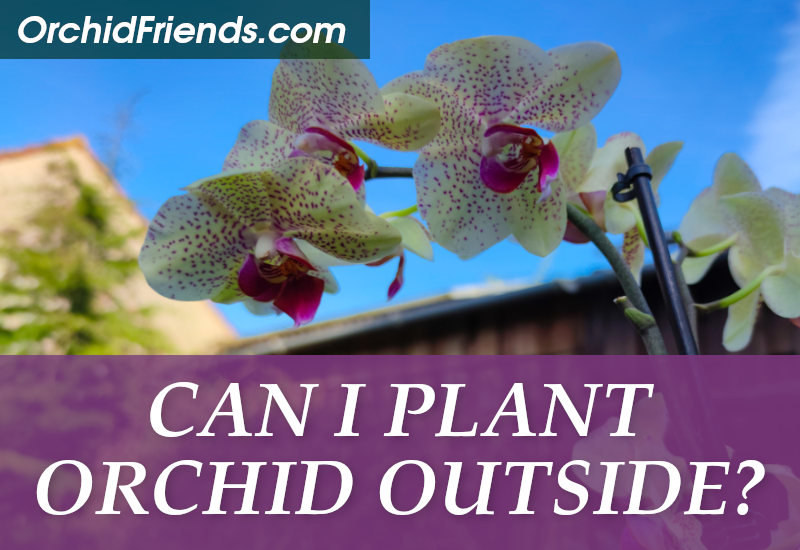
** This post is written and edited by a human being **
Phalaenopsis orchids, commonly known as “moth orchids,” are primarily grown as houseplants due to their sensitivity to temperature and humidity fluctuations. But a lot of orchid lovers are wondering if it’s possible to grow their orchids outdoors. The answer depends largely on where you live and your climate conditions.
Phalaenopsis orchids are native to tropical regions, thriving in warm, humid environments. They are not cold-tolerant and can suffer damage from temperatures below 60°F (15°C). In general, Phalaenopsis orchids should be planted outside only if you live in USDA hardiness zones 10 to 11, where temperatures remain consistently warm throughout the year.
Even if you live in a suitable climate, you’ll need to ensure that your outdoor space mimics the orchid’s natural habitat. This means providing indirect light (preferably filtered sunlight or shade), protecting the orchid from harsh winds, and maintaining high humidity levels, which can be challenging in drier environments. Outdoor planting may also expose the orchid to pests, rain, and other environmental factors that are easier to control indoors.
If your outdoor space meets these conditions, you can hang your Phalaenopsis orchids outside, but this is typically not possible for most orchid owners.
Can Orchids Grow Outside in Pots?
Yes, Phalaenopsis orchids can grow outside in pots, and in fact, this is a popular choice for many outdoor orchid growers, especially in warm climates. Growing orchids in pots outside allows you to control the orchid’s growing conditions while still giving it access to natural light and fresh air.
When placing your Phalaenopsis orchid outside, choose a location with bright, indirect light. Direct sunlight can scorch the delicate leaves of the orchid, so look for a spot with filtered sunlight or partial shade. A shaded porch, under a tree with dappled light, or a north- or east-facing balcony are ideal options.
The most important factor when growing Phalaenopsis orchids in pots outside is protecting them from extreme temperature fluctuations. Orchids are sensitive to both cold and heat, so ensure that temperatures don’t drop below 60°F (15°C) at night, and try to avoid placing them in areas where they might get too hot in the afternoon sun.
Humidity is also crucial for Phalaenopsis orchids, so be sure to provide additional moisture if your outdoor space is dry. A humidity tray, misting the orchid, or placing the pot in a humidity-friendly area will help create the tropical environment these orchids need to thrive.
Lastly, make sure the pot has good drainage to avoid waterlogging, which can cause root rot. If you live in a region with a lot of rain, consider bringing your orchid indoors or into a sheltered area during heavy downpours.
In conclusion, Phalaenopsis orchids can thrive in pots outside as long as they receive the right light, temperature, and humidity. Just be mindful of their needs and adjust their environment accordingly to keep them healthy and blooming.



